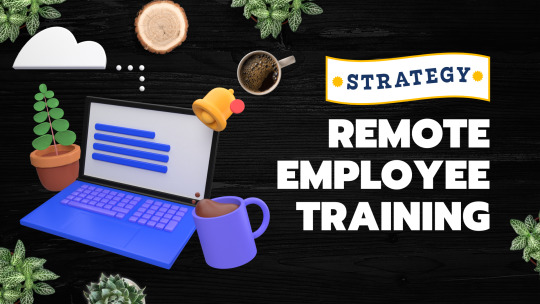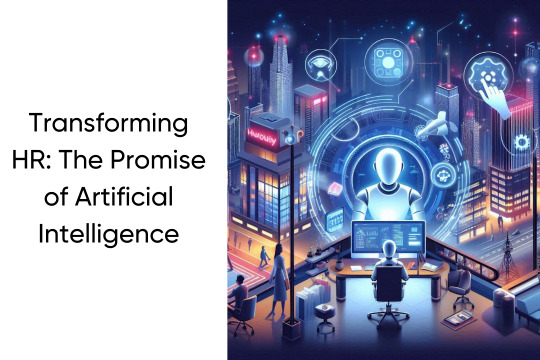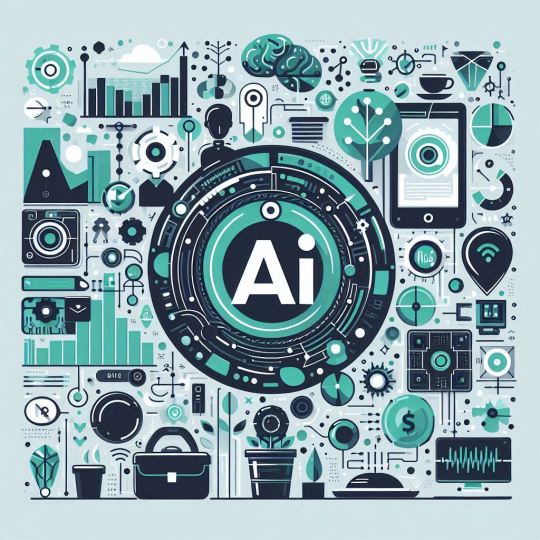#employee retention platform
Explore tagged Tumblr posts
Text
Employee Retention Software
Vite is the leading employee retention software that helps your organization build a stronger and more productive workforce. Our software allows businesses to make data-driven decisions and take proactive steps to improve employee retention.
2 notes
·
View notes
Text
#work from home employee benefits#employee perks and benefits#employee benefits packages#employee benefits in company#employee retention platform
0 notes
Text
Transformative Growth with MaxLearn: The Ultimate Tool for Effective Training

In today's rapidly evolving business landscape, organizations must continually adapt and enhance their workforce's capabilities to remain competitive. Traditional training methods often fall short in engaging employees and delivering lasting results. Enter MaxLearn, a cutting-edge microlearning platform designed to drive transformative growth. This platform is fast, fun, and effective, offering a unique approach to learning and development that goes beyond mere completion rates and revenue metrics. In this article, we will explore how MaxLearn delivers training ROI by focusing on both tangible and intangible elements, such as recall and retention of knowledge, skills, and capabilities.
The Power of MaxLearn
MaxLearn stands out as an ultimate tool for driving transformative growth due to its innovative features and learner-centric design. Here are the key aspects that make MaxLearn a game-changer:
Fast Learning Modules: MaxLearn delivers content in bite-sized modules that are quick to consume and easy to digest. This approach caters to modern learners' short attention spans and ensures that training fits seamlessly into their busy schedules.
Engaging and Fun Content: The platform leverages gamification, interactive quizzes, and multimedia elements to make learning engaging and enjoyable. By transforming training into a fun experience, MaxLearn boosts learner motivation and participation.
Effective Knowledge Retention: MaxLearn's microlearning methodology focuses on reinforcing key concepts through repetition and interactive elements. This helps in improving recall and retention of knowledge, ensuring that learners can apply what they have learned in real-world scenarios.
Personalized Learning Paths: The platform offers personalized learning paths tailored to individual learner needs and progress. This customization enhances the relevance of the training, making it more impactful and effective.
Comprehensive Analytics: MaxLearn provides detailed analytics and reporting tools to track learner progress, engagement, and performance. These insights enable organizations to continuously refine their training programs for maximum effectiveness.
Training ROI: Beyond Completion Rates and Revenues
While traditional metrics like completion rates and revenues are important, they do not capture the full impact of a training program. To truly measure training ROI, organizations need to consider the benefits and business impact of intangible elements such as recall and retention of knowledge, skills, and capabilities. Here’s how MaxLearn excels in delivering comprehensive training ROI:
1. Enhanced Knowledge Recall
One of the primary goals of any training program is to ensure that learners can recall the information when needed. MaxLearn’s microlearning modules are designed to reinforce key concepts through repetition and active engagement. By breaking down complex topics into manageable chunks and incorporating interactive elements, MaxLearn enhances knowledge recall.
Real-World Impact: Enhanced recall means that employees are better equipped to perform their tasks efficiently, make informed decisions, and solve problems effectively. This translates to improved productivity and performance in the workplace.
2. Improved Knowledge Retention
Retention is another critical aspect of training ROI. It’s not enough for learners to simply understand the material; they must retain it over time. MaxLearn’s approach to learning ensures that information is not only understood but also retained.
Long-Term Benefits: Improved retention leads to long-term benefits for the organization. Employees who retain knowledge are more likely to apply it consistently, leading to sustained improvements in performance and a reduction in the need for retraining.
3. Skill and Capability Development
Training programs should focus on developing specific skills and capabilities that are relevant to the job. MaxLearn’s personalized learning paths and interactive content are designed to build these skills effectively.
Enhanced Competence: By developing relevant skills and capabilities, employees become more competent in their roles. This competence boosts confidence, job satisfaction, and overall performance, contributing to the organization's success.
4. Employee Engagement and Motivation
Engaged and motivated employees are more likely to embrace training and apply what they’ve learned. MaxLearn’s fun and interactive approach to learning enhances engagement and motivation.
Positive Work Environment: High levels of engagement and motivation contribute to a positive work environment. Engaged employees are more committed to their roles, leading to lower turnover rates and higher productivity.
5. Adaptability and Continuous Learning
In today’s fast-paced world, the ability to adapt and continuously learn is crucial. MaxLearn promotes a culture of continuous learning by providing ongoing access to relevant training materials.
Organizational Agility: An adaptable workforce that values continuous learning is more agile and capable of responding to changes in the market or industry. This agility gives the organization a competitive edge.
Implementing MaxLearn for Maximum ROI
To fully leverage MaxLearn’s capabilities and achieve maximum training ROI, organizations should follow these best practices:
1. Align Training with Business Goals
Ensure that your training programs are aligned with the organization’s strategic goals. Identify the key skills and knowledge areas that will drive business success and focus your training efforts on these areas.
Example: If improving customer service is a strategic priority, develop microlearning modules that enhance communication skills, problem-solving abilities, and product knowledge.
2. Engage Learners with Interactive Content
Use MaxLearn’s interactive features to create engaging content that captures learners’ attention and promotes active participation.
Example: Incorporate gamified elements such as leaderboards, badges, and point systems to motivate learners and encourage healthy competition.
3. Personalize Learning Paths
Tailor learning paths to individual needs and progress. Use MaxLearn’s analytics to identify areas where learners may need additional support and adjust the training accordingly.
Example: Provide additional resources or alternative learning modules for learners who struggle with certain topics, ensuring that they receive the support they need to succeed.
4. Monitor and Evaluate Progress
Regularly monitor learner progress and evaluate the effectiveness of your training programs. Use MaxLearn’s comprehensive analytics to gather insights and make data-driven decisions.
Example: Track metrics such as completion rates, quiz scores, and engagement levels to identify trends and areas for improvement.
5. Foster a Culture of Continuous Learning
Encourage a culture of continuous learning by providing ongoing access to training materials and promoting the importance of lifelong learning.
Example: Create a library of microlearning modules that employees can access on-demand, allowing them to learn at their own pace and revisit content as needed.
Conclusion
MaxLearn offers the ultimate tool for driving transformative growth through effective training. By delivering fast, fun, and engaging learning experiences, MaxLearn ensures that employees not only complete their training but also retain and apply what they’ve learned. Measuring training ROI goes beyond simple metrics like completion rates and revenues; it’s about understanding the benefits and business impact of intangible elements like recall and retention of knowledge, skills, and capabilities. By leveraging MaxLearn’s robust features and following best practices for implementation, organizations can achieve comprehensive training ROI and foster a culture of continuous learning and development. Investing in MaxLearn is not just about enhancing training programs; it’s about empowering employees, driving business success, and ensuring long-term growth.
#MaxLearn#Transformative growth#Microlearning platform#Fast learning modules#Engaging content#Effective training#Training ROI#Completion rates#Revenue metrics#Recall and retention#Knowledge retention#Skill development#Capability building#Employee engagement#Learner motivation#Interactive quizzes#Gamification#Personalized learning paths#Comprehensive analytics#Business impact#Learning outcomes#Tangible benefits#Intangible elements#Learning objectives#Audience analysis#Content creation#Content delivery#Real-world impact#Long-term benefits#Enhanced competence
1 note
·
View note
Text
Digital Employee Experience Platform
Amirra's Digital Employee Experience Platform enhances workplace productivity & engagement, providing a seamless integration of tools and resources. Email [email protected] for more info
#digital employee experience platform#employee retention solutions#amirra#employee onboarding solution#employee retention strategies
0 notes
Text
Cash Advances and Loans for Gig Workers No Credit Check
Overcoming Financial Challenges: A Comprehensive Guide to Securing Loans and Cash Advances for Gig Workers and Self-Employed Individuals Introduction The gig economy has revolutionized the way we work, offering flexibility and autonomy to pursue our passions and entrepreneurial dreams. However, gig workers and self-employed individuals often face unique challenges when seeking financial…

View On WordPress
#1099 contractors#alternative funding options#bank brezzy#BankBreezy#Breezy ConnectCash#business lines of credit#cash advances#cash flow management#co-signed loans#credit unions#direct deposits#emergency funds#employee retention tax credits#financial challenges#financial planning#financial solutions#freelance job marketplaces#gig economy platforms#gig workers#government-backed loans#invoice factoring#invoice financing#loans#no credit check loans#online lending platforms#point-of-sale loans#SBA loans#secured credit cards#Self-Employed#Self-Employed Tax Credit
1 note
·
View note
Text

Best Employee Engagement Platform – Vega HR
An employee engagement platform is a comprehensive software solution designed to enhance the overall employee experience and foster a more engaged and productive workforce within an organization. It serves as a central hub that brings together various tools, features, and resources to create a positive work environment and promote meaningful interactions between employees and the company. At its core, an employee engagement platform focuses on cultivating a sense of belonging, motivation, and satisfaction among employees, leading to increased productivity, higher job satisfaction, and improved retention rates.
#employee engagement and retention#engagement programs#employee engagement platform#employee engagement programs#employee programs
0 notes
Note
So just to clarify it was webtoon who cancelled Woven? Or did they make they realistic demands in your contract/threaten to lower your pay (A valid reason to leave btw) but I want to understand canceling of series more because it's happened to some of my favorites over the years and it makes me livid. If you aren't comfortable discussing it don't worry about it, I will support you guys once you're back!!
Take care <3
it was really a matter of wanting to either be paid an amount that would at least bring us up to minumum wage per hour worked [we were unwilling to reduce the quality of our work any more than we already had to better reflect the budget we had to work with], or being given a scheduel that would permit us to take on additional work to make up the difference.
in the end, we weren't performing well enough to be afforded these things, we were unwilling to compromise our quality, and the trajectory was unsustainable as we also had to pay for assistants out of our own pocket in order to help us meet the deadlines.
And so, it wasn't that they didn't want to give us a second season, it was that neither we nor webtoon could afford it.
Most other comics that aren't being renewed are just straight-up being told that they can't be afforded a new season, even at their current pay rate. [To speculate, we'd guess it may be because readership and retention, etc is down across the entire platform this past past two years or so, and there are internal accounts that need to stay at a certain balance (especially while they were prepping to go public in the stock exchange)...and so shedding contracts is the easiest way to retain internal value, and is less bad press than terminating/laying off employees (which they still also did relatively recently)]
If you see a webtoon that seems to have a very rushed and unsatisfying ending, this is probably why. They are often given an additional number of episodes to quickly "sunset" the series and bring it to a conclusive end. but often, it is just not enough episodes. We were also encouraged to do this but...again, we were uncompromising about how far we were willing to reduce the quality of our comic.
#don't screencap this#We're not saying anything that isn't already kinda out there but we don't like to cause any kind of stir.
47 notes
·
View notes
Text
Remote Employee Training Strategies For Success

In today’s fast-evolving business landscape, the shift towards remote work has become a prominent trend. With this shift, companies are faced with the challenge of maintaining high standards of performance, engagement, and productivity among their remote teams. A crucial part of this is employee training. Effective remote training programs are essential for ensuring that employees are equipped with the skills and knowledge they need to succeed, no matter where they are working from. In this article, we’ll explore several strategies for successful Virtual employee training.
#1 Develop Clear and Structured Training Programs
One of the first steps to ensuring a successful training experience for remote employee is to create a clear and structured program. Unlike in-person training, where employees can ask questions or get immediate feedback, remote training often happens asynchronously. Your training materials should be organized, easy to follow, and concise to make this process as effective as possible.
Break down complex information into manageable modules, use visual aids, and incorporate interactive elements to keep employees engaged. A well-structured training program allows Virtual employees to progress at their own pace while ensuring that the content is comprehensive and easy to understand.
#2 Leverage Technology to Enhance Learning

Technology is the backbone of remote work and plays a crucial role in Virtual employee training. Using the right tools can make a significant difference in how employees interact with training materials. Video conferencing platforms like Zoom or Microsoft Teams are essential for live training sessions, allowing employees to participate in real-time discussions, ask questions, and receive immediate feedback.
Additionally, learning management systems (LMS) like Moodle or TalentLMS can help organize and track training content. These systems allow for self-paced learning, quizzes, and certifications. Incorporating multimedia elements such as video tutorials, infographics, and interactive simulations can also help employees retain the information better and keep them engaged throughout the training process.
#3 Foster a Culture of Continuous Learning
Virtual training should not be a one-off event; it must be an ongoing process. Virtual employees often face the challenge of isolation and may miss out on spontaneous learning opportunities that arise in a traditional office setting. Therefore, it’s important to create a culture that encourages continuous learning.
This can be achieved by providing regular learning resources, encouraging employees to pursue online courses, and organizing regular webinars or knowledge-sharing sessions. Incentivizing employees to learn new skills, such as offering certifications or rewards for completing training, can also drive engagement and improve long-term retention of knowledge.
#4 Provide Personalized Learning Paths

Not all employees learn in the same way or at the same pace. A one-size-fits-all approach to training can lead to disengagement or frustration, especially for employees who might already have expertise in certain areas. Personalizing the learning experience is an effective way to meet the individual needs of each employee.
Assess the current skill levels of your remote team members and tailor training programs to match their specific learning requirements. For example, some employees may need more foundational training, while others may benefit from advanced modules. Personalized learning paths also allow employees to focus on areas where they need the most improvement, ultimately leading to more efficient skill development.
#5 Prioritize Communication and Feedback
Clear communication is essential in any training program, but it becomes even more important when working remotely. Regular feedback helps ensure that Remote team members stay on track and feel supported throughout the training process. Incorporate opportunities for real-time feedback through virtual check-ins, one-on-one meetings, and surveys.
Be proactive in providing employee feedback on performance and areas for improvement, while also being open to suggestions on how the training can be improved. Encourage employees to ask questions and seek clarification when needed. This two-way communication helps build trust and enhances the overall effectiveness of the training program.
#6 Create an Engaging and Collaborative Environment

Training doesn’t have to be a solitary experience, even for remote teams. Encourage collaboration among employees during the training process. This can be achieved through group activities, peer learning, or discussion forums where employees can share insights, challenges, and best practices. Platforms like Slack or Microsoft Teams can be used for team discussions, brainstorming sessions, and informal learning.
A sense of community is vital for remote workers, and fostering this environment during training helps employees feel more connected to their colleagues and the company. In turn, this engagement increases the likelihood of successful knowledge retention and application.
#7 Measure Training Effectiveness
Once your Remote team member training program is in place, it’s important to regularly assess its effectiveness. Use analytics to track employee progress, completion rates, and quiz results. Collect feedback from employees about their learning experiences and identify areas where the training can be improved.
Monitoring training effectiveness helps ensure that your efforts are paying off and that employees are gaining the necessary skills to succeed. Continuous evaluation also helps you stay updated with new training tools or methodologies that can enhance the learning experience.
You can also watch: EmpMonitor: Manage Remote Work Easily
youtube
Conclusion
As remote work continues to shape the future of business, developing effective training strategies for remote teams is more important than ever. By creating structured training programs, leveraging technology, fostering continuous learning, personalizing learning paths, and encouraging collaboration, companies can set their remote employee up for success. When done right, Remote team member training not only enhances individual performance but also drives overall business growth.
#remote employee#remote team management#remote work management#Virtual team member#Virtual worker#Youtube
2 notes
·
View notes
Text
Why Your Business Needs Fintech Software At present ?

In an era defined by technological advancements and digital transformation, the financial sector is experiencing a seismic shift. Traditional banking practices are being challenged by innovative solutions that streamline operations, enhance user experiences, and improve financial management. Fintech software is at the forefront of this transformation, offering businesses the tools they need to stay competitive. Here’s why your business needs fintech software now more than ever.
1. Enhanced Efficiency and Automation
One of the primary advantages of fintech software is its ability to automate repetitive and time-consuming tasks. From invoicing and payment processing to compliance checks, automation helps reduce human error and increase efficiency. By integrating fintech software services, businesses can streamline their operations, freeing up employees to focus on more strategic tasks that require human intelligence and creativity.
Automated processes not only save time but also reduce operational costs. For example, automating invoice processing can significantly cut down on the resources spent on manual entry, approval, and payment. This efficiency translates into faster service delivery, which is crucial in today’s fast-paced business environment.
2. Improved Customer Experience
In a competitive marketplace, providing an exceptional customer experience is vital for business success. Fintech software enhances user experience by offering seamless, user-friendly interfaces and multiple channels for interaction. Customers today expect quick and easy access to their financial information, whether through mobile apps or web platforms.
Fintech software services can help businesses create personalized experiences for their customers. By analyzing customer data, businesses can tailor their offerings to meet individual needs, enhancing customer satisfaction and loyalty. A better user experience leads to higher retention rates, ultimately contributing to a company’s bottom line.
3. Data-Driven Decision Making
In the digital age, data is one of the most valuable assets a business can have. Fintech software allows businesses to collect, analyze, and leverage vast amounts of data to make informed decisions. Advanced analytics tools embedded in fintech solutions provide insights into customer behavior, market trends, and financial performance.
These insights enable businesses to identify opportunities for growth, mitigate risks, and optimize their operations. For instance, predictive analytics can help anticipate customer needs, allowing businesses to proactively offer services or products before they are even requested. This data-driven approach not only enhances strategic decision-making but also positions businesses ahead of their competition.
4. Increased Security and Compliance
With the rise of cyber threats and increasing regulatory scrutiny, security and compliance have become paramount concerns for businesses. Fintech software comes equipped with advanced security features such as encryption, two-factor authentication, and real-time monitoring to protect sensitive financial data.
Moreover, fintech software services often include built-in compliance management tools that help businesses adhere to industry regulations. By automating compliance checks and generating necessary reports, these solutions reduce the risk of non-compliance penalties and reputational damage. Investing in robust security measures not only safeguards your business but also builds trust with customers, who are increasingly concerned about data privacy.
5. Cost Savings and Financial Management
Implementing fintech software can lead to significant cost savings in various aspects of your business. Traditional financial management processes often require extensive manpower and resources. By automating these processes, fintech solutions can help minimize operational costs and improve cash flow management.
Additionally, fintech software often offers advanced financial tools that provide real-time insights into cash flow, expenses, and budgeting. These tools help businesses make informed financial decisions, leading to better resource allocation and improved profitability. In an uncertain economic climate, having a firm grasp on your financial situation is more critical than ever.
6. Flexibility and Scalability
The modern business landscape is characterized by rapid changes and evolving market conditions. Fintech software offers the flexibility and scalability necessary to adapt to these changes. Whether you’re a startup looking to establish a foothold or an established enterprise aiming to expand, fintech solutions can grow with your business.
Many fintech software services are cloud-based, allowing businesses to easily scale their operations without significant upfront investments. As your business grows, you can add new features, expand user access, and integrate additional services without overhauling your entire system. This adaptability ensures that you can meet changing customer demands and market conditions effectively.
7. Access to Innovative Financial Products
Fintech software has democratized access to a variety of financial products and services that were once only available through traditional banks. Small businesses can now leverage fintech solutions to access loans, payment processing, and investment platforms that are tailored to their specific needs.
These innovative financial products often come with lower fees and more favorable terms, making them accessible for businesses of all sizes. By utilizing fintech software, you can diversify your financial strategies, ensuring that you’re not reliant on a single source of funding or financial service.
Conclusion
In conclusion, the need for fintech software in today’s business environment is clear. With enhanced efficiency, improved customer experiences, and the ability to make data-driven decisions, fintech solutions are essential for staying competitive. Additionally, the increased focus on security and compliance, coupled with cost savings and access to innovative products, makes fintech software a valuable investment.
By adopting fintech software services, your business can not only streamline its operations but also position itself for growth in a rapidly evolving financial landscape. As the world becomes increasingly digital, embracing fintech solutions is no longer an option; it’s a necessity for sustainable success.
3 notes
·
View notes
Text
Transforming HR: The Promise of Artificial Intelligence

AI in HR is revolutionizing how organizations manage recruitment, performance, and employee engagement. By automating repetitive tasks, AI frees up HR professionals to focus on strategic activities like workforce planning and talent development. Platforms like HireOQuick exemplify this transformation by integrating AI-powered recruitment tools that streamline candidate sourcing, screening, and onboarding.
With AI’s ability to analyze vast amounts of data, companies can predict employee turnover, identify high-potential talent, and personalize employee experiences. AI in HR also enhances decision-making through analytics, improving retention rates and performance tracking.
As businesses embrace AI solutions like HireOQuick, the future of HR becomes more agile, efficient, and employee-centric. This technology promises not only cost savings but also a more proactive approach to managing talent—ensuring businesses thrive in today’s competitive environment.
2 notes
·
View notes
Text
Best 10 Business Strategies for year 2024
In 2024 and beyond, businesses will have to change with the times and adjust their approach based on new and existing market realities. The following are the best 10 business approach that will help companies to prosper in coming year
1. Embrace Sustainability
The days when sustainability was discretionary are long gone. Businesses need to incorporate environmental, social and governance (ESG) values into their business practices. In the same vein, brands can improve brand identity and appeal to environmental advocates by using renewable forms of energy or minimizing their carbon footprints.
Example: a fashion brand can rethink the materials to use organic cotton and recycled for their clothing lines. They can also run a take-back scheme, allowing customers to return old clothes for recycling (not only reducing waste but creating and supporting the circular economy).
2. Leverage AI

AI is revolutionizing business operations. Using AI-fuelled solutions means that you can automate processes, bring in positive customer experiences, and get insights. AI chatbots: AI can be utilized in the form of a conversational entity to support and perform backend operations, as well.
With a bit more specificity, say for example that an AI-powered recommendation engine recommends products to customers based on their browsing history and purchase patterns (as the use case of retail). This helps to increase the sales and improve the shopping experience.
3. Prioritize Cybersecurity
Cybersecurity is of utmost important as more and more business transitions towards digital platforms. Businesses need to part with a more substantial amount of money on advanced protective measures so that they can keep sensitive data private and continue earning consumer trust. Regular security audits and training of employees can reduce these risks.
Example: A financial services firm may implement multi-factor authentication (MFA) for all online transactions, regularly control access to Internet-facing administrative interfaces and service ports as well as the encryption protocols to secure client data from cyberattacks.
4. Optimizing Remote and Hybrid Working Models

Remote / hybrid is the new normal Remote teams force companies to implement effective motivation and management strategies. Collaboration tools and a balanced virtual culture can improve productivity and employee satisfaction.
- Illustration: a Tech company using Asana / Trello etc. for pm to keep remote teams from falling out of balance. They can also organise weekly team-building activities to keep a strong team spirit.
5. Focus on Customer Experience
Retention and growth of the sales follow-through can be tied to high quality customer experiences. Harness data analytics to deepen customer insights and personalize product offers making your marketing campaigns personal: a customer support that is responsive enough can drive a great level of returning customers.
Example – For any e-commerce business, you can take user experience feedback tools to know about how your customers are getting along and make necessary changes. Custom email campaigns and loyalty programs can also be positively associated with customer satisfaction and retention.
6. Digitalization Investment

It is only the beginning of digital transformation which we all know, is key to global competitiveness. For streamlining, companies have to adopt the use advanced technologies such as Blockchain Technology and Internet of Things (IoT) in conjunction with cloud computing.
IoT example : real-time tracking and analytics to optimize supply chain management
7. Enhance Employee Skills
Develop Your Employees: Investing in employee development is key to succeeding as a business. The training is provided for the folks of various industries and so employees can increase their skills that are needed to work in a certain company. Employee performance can be enhanced by providing training programs in future technology skills and soft skills and job satisfaction.
Example: A marketing agency can host webinars or create courses to teach people the latest digital marketing trends and tools This can help to keep employees in the know which results in boosting their skills, making your campaigns successful.
8. Diversify Supply Chains

The ongoing pandemic has exposed the weaknesses of global supply chains. …diversify its supply base and promote the manufacturing of drugs in Nigeria to eliminate total dependence on a single source. In return, this approach increases resilience and reduces exposure to the risks of supply chain interruption.
- E.g., a consumer electronics company can source components from many suppliers in various regions. In so doing, this alleviates avoidable supply chain interruptions during times of political tensions or when disasters hit.
9. Make Decisions Based on Data
A business database is an asset for businesses. By implementing data, they allow you to make decisions based on the data that your analytics tools are providing. For example, sales analysis lets you track trends and better tailor your goods to the market.
Example: A retail chain can use data analytics to find out when a customer buys, and it change their purchasing policies. This can also reduce overstock and stockouts while overall, increasing efficiency.
10. Foster Innovation

Business Growth Innovation is Key A culture of creativity and experimentation should be established in companies. Funding R&D and teaming with startups can open many doors to both solve problems creatively but also tap into new markets.
Example: A software development firm could create an innovation lab where team members are freed to work on speculative projects. Moreover, work with start-ups on new technologies and solutions.
By adopting these strategies, businesses can navigate the turbulence for 2024 and roll up market — progressive.AI with an evolving dynamic market, being ahead of trends and updated is most likely will help you thrive in the business landscape.
#ai#business#business strategy#business growth#startup#fintech#technology#tech#innovation#ai in business
2 notes
·
View notes
Text
Selecting the right employee engagement software for your organization requires careful consideration of your organization's goals and needs, software features, ease of use, integration, customization options, security and data privacy measures, pricing, and support. Check here essential factors to consider when selecting employee engagement software for your organization.
#employee retention software#employee retention platform#employee engagement software#employee engagement platforms#employee engagement tools#Canada
1 note
·
View note
Text
Why Choose Green LMS
Welcome to The Green LMS Corporate Learning Management System (LMS), a robust platform designed to enhance employee skills and drive organizational success. Our Corporate LMS offers tailored learning experiences that cater to diverse roles and career aspirations, ensuring your team remains competitive and motivated.
Key Features of Our Corporate LMS:
Personalized Learning Paths: Tailored to individual employee needs, aligning with career goals and organizational objectives.
Comprehensive Course Library: Access a wide range of courses covering technical skills, leadership development, compliance training, and more.
Interactive Learning Modules: Engage employees with multimedia content, including videos, simulations, and quizzes, to foster active learning and skill retention.
Certifications and Progress Tracking: Measure learning outcomes with assessments and earn certifications upon completion of courses.
Collaborative Learning Tools: Facilitate knowledge-sharing through discussion forums, group projects, and peer-to-peer interactions.
Mobile-Friendly Access: Learn anytime, anywhere, with seamless access from desktops, tablets, and mobile devices.
Benefits of Our Corporate LMS:
Enhanced Employee Performance: Equip your team with up-to-date skills and knowledge, improving overall job performance and efficiency.
Cost-Efficient Training: Reduce training costs with scalable online learning solutions that eliminate travel and logistics expenses.
Improved Employee Engagement: Foster a culture of continuous learning and development, boosting employee morale and retention.
Regulatory Compliance: Ensure compliance with industry standards and regulations through accessible and regularly updated training modules.
Getting Started with The Green Corporate LMS:
Sign Up: Access our Corporate LMS through Green LMS using your company credentials.
Explore Courses: Browse our extensive course catalog or use search filters to find courses relevant to your team's needs.
Start Learning: Enroll in courses, complete modules at your own pace, and track progress through user-friendly dashboards.
Why Choose Corporate LMS?
At The Green LMS we prioritize your team's development by offering a comprehensive learning solution that adapts to your business needs. Our Corporate LMS empowers employees to reach their full potential, driving innovation and growth across your organization.
Ready to Transform Your Team's Skills?
Join leading companies who trust Corporate LMS to nurture talent and achieve strategic goals. Explore our platform today and unlock a world of learning opportunities.
Contact us at [Support Email/Phone] for more information or to schedule a demo.
#LMSforCorporate #LMSforBusiness #LMSsolutionforCorporates
2 notes
·
View notes
Text
Enhancing Employee Performance with Microlearning: A Deep Dive into the 70:20:10 Model

In today's fast-paced work environment, traditional training methods often fall short in equipping employees with the necessary skills and knowledge to excel in their roles. Microlearning has emerged as an effective strategy to bridge this gap, offering on-the-job support and significantly enhancing employee performance. By delivering bite-sized, focused learning modules, microlearning aligns perfectly with the principles of the 70:20:10 model of learning and development. This model asserts that 70% of learning occurs through workplace experiences, 20% through social learning, and 10% via formal structured learning. Let’s explore how microlearning integrates with this model to optimize employee development.
The 70:20:10 Model: A Brief Overview
The 70:20:10 model, developed by Morgan McCall, Michael M. Lombardo, and Robert A. Eichinger at the Center for Creative Leadership, provides a robust framework for understanding how adults learn in professional settings. The model suggests that:
70% of learning comes from on-the-job experiences: This involves solving real-life problems, taking on challenging tasks, and gaining practical insights through daily activities.
20% of learning is derived from social interactions: This encompasses mentoring, coaching, collaboration, and learning through observation and feedback from peers and leaders.
10% of learning is from formal education: This includes structured courses, workshops, and training programs designed to impart specific knowledge and skills.
Microlearning and On-the-Job Experiences (70%)
Microlearning is inherently practical, making it an ideal tool for facilitating on-the-job learning. Here’s how it aligns with the 70% component of the model:
Immediate Application: Microlearning modules are typically concise and focused on specific skills or knowledge areas, allowing employees to quickly apply what they’ve learned to their work. This immediacy reinforces learning through real-world application, which is critical for retention and mastery.
Contextual Relevance: By delivering content that is directly relevant to an employee's daily tasks, microlearning ensures that the training is pertinent and immediately useful. For instance, a sales associate might receive a quick lesson on handling customer objections just before a client meeting.
Flexibility: Microlearning can be accessed anytime, anywhere, enabling employees to learn at the point of need. This flexibility ensures that learning doesn’t disrupt work but rather complements it, fitting seamlessly into the flow of the workday.
Microlearning and Social Learning (20%)
Microlearning also plays a significant role in facilitating social learning, the 20% aspect of the 70:20:10 model. Here’s how:
Collaborative Learning: Microlearning platforms often include features that encourage interaction, such as discussion forums, social media integration, and peer reviews. These features foster a collaborative learning environment where employees can share insights and best practices.
Mentorship and Coaching: Short, targeted learning modules can be used by mentors and coaches to support their guidance. For example, a mentor might assign a specific microlearning module to address a mentee’s area of improvement and then discuss the content in a follow-up session.
Feedback Mechanisms: Microlearning tools often incorporate feedback systems where learners can receive immediate input on their performance. This continuous feedback loop helps learners refine their skills and knowledge through social interaction.
Microlearning and Formal Education (10%)
While microlearning shines in practical and social contexts, it also complements formal structured learning, the 10% of the 70:20:10 model:
Reinforcement of Formal Training: Microlearning can be used to reinforce and supplement formal training sessions. After attending a workshop or a course, employees can engage with microlearning modules that reinforce key concepts and provide additional practice opportunities.
Pre-Training Preparation: Short modules can be used to prepare employees for formal training sessions, ensuring they have the foundational knowledge needed to maximize the benefits of the course.
Post-Training Follow-Up: Following formal training, microlearning can offer follow-up modules that help solidify the learning, address any lingering questions, and provide ongoing support.
Benefits of Microlearning in the 70:20:10 Framework
Increased Engagement: Microlearning’s bite-sized format is more engaging than traditional lengthy courses. Employees are more likely to complete and retain the information presented in short, focused bursts.
Higher Retention Rates: Research shows that spaced repetition and short learning sessions significantly improve information retention. Microlearning leverages these principles, helping employees remember and apply what they’ve learned.
Personalized Learning Paths: Microlearning allows for the creation of personalized learning experiences. Employees can choose modules that address their specific needs and learning preferences, fostering a more tailored and effective learning experience.
Cost-Effective: Microlearning is typically more cost-effective than traditional training programs. It requires fewer resources to develop and deliver and can be scaled easily across the organization.
Implementing Microlearning: Best Practices
To maximize the benefits of microlearning within the 70:20:10 framework, organizations should consider the following best practices:
Identify Key Learning Objectives: Start by identifying the specific skills and knowledge areas that need to be addressed. This ensures that each microlearning module is purposeful and aligned with organizational goals.
Leverage Technology: Utilize modern learning management systems (LMS) and mobile learning platforms to deliver microlearning content. These tools provide easy access, track progress, and offer analytics to measure effectiveness.
Integrate with Workflows: Ensure that microlearning is seamlessly integrated into the daily workflows of employees. This can be achieved by making content accessible through mobile devices, enabling learning at the point of need.
Encourage Social Learning: Foster a culture of collaboration and knowledge sharing. Encourage employees to discuss and share microlearning content, participate in forums, and provide peer feedback.
Continuous Improvement: Regularly review and update microlearning content to ensure it remains relevant and effective. Gather feedback from employees to identify areas for improvement and to keep the learning experience fresh and engaging.
Conclusion
Microlearning, with its focus on delivering concise and relevant content, fits seamlessly within the 70:20:10 learning and development model. By supporting on-the-job learning, facilitating social interactions, and complementing formal education, microlearning not only enhances employee performance but also fosters a culture of continuous improvement. As organizations continue to navigate the complexities of the modern workplace, microlearning offers a dynamic and effective solution to meet their evolving learning needs.
#Microlearning#Employee Performance#On-the-Job Support#70:20:10 Model#Workplace Learning#Informal Learning#Social Learning#Formal Structured Learning#Learning and Development#Continuous Improvement#Bite-Sized Learning#Practical Training#Real-World Application#Flexible Learning#Collaborative Learning#Mentorship and Coaching#Feedback Mechanisms#Learning Engagement#Information Retention#Personalized Learning Paths#Cost-Effective Training#Learning Management Systems (LMS)#Mobile Learning Platforms#Seamless Integration#Knowledge Sharing#Peer Feedback#Learning Objectives#Technology in Learning#Training Effectiveness#Modern Workplace Training
1 note
·
View note
Text
Hybrid work software from Amirra revolutionizes workplace flexibility, blending remote and on-site tasks seamlessly. It optimizes scheduling, tracks productivity, and fosters collaboration across teams, ensuring smooth communication and efficient workflow management. Experience a balanced, dynamic work environment. Email [email protected] for more info.
#employee retention strategies#digital employee experience platform#amirra#employee retention solutions#Employee Onboarding Solution
0 notes
Text
Top 7 Challenges Faced By IT Industry In 2023
Within the rapidly growing universe of technology, the IT companies in India assume a crucial role, persistently adjusting themselves to cater to the needs of a perpetually shifting environment. Nevertheless, the advancement of society brings forth a set of obstacles that necessitate a deliberate approach to resolution. As the year 2023 commences, the IT industry faces a multitude of challenges that necessitate careful consideration and effective measures. This blog aims to explore the primary issues encountered by the IT industry in the current year, providing insights into their consequences and possible remedies.

1. Cybersecurity Threats:
The escalation of cyber risks has been observed as a consequence of the widespread adoption of digital technology and interconnected systems. The level of sophistication exhibited by cybercriminals is on the rise, as they deploy advanced strategies to bypass security systems. All the IT companies in Gujarat, India, in the year 2023 are confronted with the formidable challenge of maintaining a competitive edge in the face of cyber attacks, while simultaneously prioritising data protection and securing essential infrastructure. The implementation of effective cybersecurity safeguards, regular conduct of security audits, and provision of cybersecurity education to staff are essential elements in addressing and minimising this risk.
2. Data Privacy and Compliance:
The increasingly stringent legislative framework surrounding data privacy poses a substantial obstacle for the information technology sector. Stringent regulations pertaining to data privacy, such as the General Data Privacy Regulation (GDPR), necessitate rigorous adherence. In the year 2023, the IT companies in Vadodara, Gujarat have the challenge of striking a delicate equilibrium between adhering to regulatory requirements and efficiently using data for commercial objectives. IT organisations are required to allocate resources towards the implementation of compliance frameworks, provide training to their employees, and guarantee that data-handling procedures are in accordance with the prescribed norms.
3. Talent Acquisition and Retention:
The acquisition and retention of talent pose an ongoing problem for the IT industry, as it continues to seek and keep qualified workers. The scarcity of highly specialised skills frequently results in a disparity between demand and supply, hence engendering intense rivalry for those with such talents. Moreover, the current trends in remote work and the increasing globalisation of the talent market serve to exacerbate this challenge. In order to tackle this issue, a reliable IT company in India like Nivida Web Solutions prioritises the enhancement of the skills of their current workforce, provides enticing remuneration packages, cultivates a favourable work environment, and creates avenues for professional advancement and personal improvement.
4. Technological Advancements and Adaptability:
The expeditious rate at which technological developments are occurring has both advantages and disadvantages for the IT business. Although these developments present promising prospects, they also present a difficulty in terms of adaptation. Keeping abreast of developing technology and enabling a smooth transition to new platforms and tools may be a demanding task. In order to effectively adapt to emerging technology, IT organisations must allocate resources towards the implementation of continual training and development programmes, which aim to equip their personnel with the requisite skills.
5. Resource Optimization and Scalability:
The optimisation of resources and the effective scalability of operations have emerged as significant challenges in recent times. The management of resources and the scaling of operations in response to varying market needs and the imperative of cost-effectiveness can provide intricate challenges. Cloud computing and intelligent resource allocation are essential solutions that can be employed to effectively address this dilemma. The utilisation of cloud solutions by Nivida Web Solutions - a recognised IT company in Gujarat, India, allows for enhanced flexibility and cost-efficiency, hence assuring the appropriate allocation of resources.
6. Integration and Interoperability:
The IT environment is distinguished by a diverse array of systems and applications that necessitate harmonious integration. The task of achieving integration and interoperability across diverse platforms, legacy systems, and emerging technologies poses a significant challenge. The establishment of interconnectedness is crucial in facilitating an effective and productive IT ecosystem. It is imperative for the industry to prioritise the development of standardised interfaces, utilise APIs effectively, and implement integration platforms in order to improve interoperability.
7. Environmental Sustainability:
Environmental sustainability has emerged as a pressing issue in various sectors, encompassing the field of IT. The IT industry possesses a substantial carbon footprint as a result of its energy consumption, generation of electronic waste, and operations of data centres. In the year 2023, the sector is faced with the task of identifying environmentally sustainable solutions and adopting practices that effectively mitigate their ecological footprint. The use of green technology, the optimisation of data centre efficiency, and the incorporation of circular economy concepts are positive measures in the pursuit of sustainability objectives.
Final Thoughts:
The IT sector encounters a diverse range of issues in the year 2023, necessitating the implementation of proactive and strategic methodologies. Addressing a range of difficulties, including cybersecurity risks, talent acquisition, technological adaptation, and sustainability, is necessary in order to establish and maintain a flourishing and sustainable information technology ecosystem. By adopting a proactive approach towards innovation, allocating resources towards skill enhancement, and placing emphasis on adherence to regulations and sustainability, Nivida Web Solutions - the most distinguished IT company in Vadodara, may effectively navigate the obstacles it faces and emerge with increased resilience. This will facilitate the ongoing growth and progression of the industry in the era of digitalization.
7 notes
·
View notes